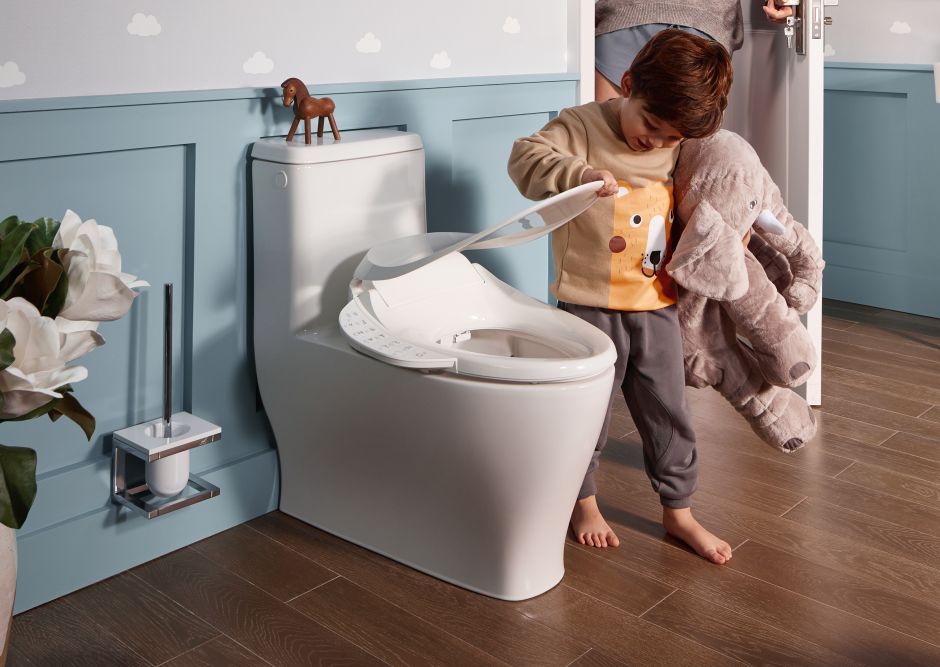600
It’s a strange artifact, for the French. But a rather common piece of furniture for the Spanish. The bidet is a way of distinguishing between Spanish and French bathrooms: almost systematic in Spain, it is almost impossible to find in France.
One might think that this cultural (and hygienic) difference is due to the origin of this invention. And yet, it’s quite the opposite: the bidet is French. But history has decided otherwise.
Compulsory bidet in Spain
For non-accustomed people who still don’t know how to use a bidet, no, it’s not for washing your feet but your private parts, after a trip to the toilet for example. If this equipment is not common in France, it is still very widespread in Spain, but also in Italy, Portugal, Greece and even in certain Latin American countries (Argentina, Uruguay, Paraguya, etc.).
It has not always been an essential for Spanish bathrooms; it only became so in the 1960s, in the middle of the dictatorship, and was considered a true luxury piece of furniture, reports the Aragonese daily El Heraldo. The bidet became a norm in the 1970s and 1980s in Spanish housing, being obligatory in apartments with four or more bedrooms dependent on the official public protection system, a widespread type of housing at the time, according to the newspaper Cinco Días.
Some social housing between 1976 and 1978, for example, was required to have a bidet in the bathroom. It is imposed in certain hotels, such as luxury establishments from 1968, and four stars from 1983; Having a bidet in a bathroom is therefore very common in Spanish hotels in the 1980s. Similar standards also existed in Portugal and Italy, which explains why this equipment is still popular in these countries today.
But after the 1980s, the bidet became increasingly shunned by the Spanish. It takes up space in the bathroom, when it could be replaced by a simple shower, and makes the construction of new housing more expensive. It has gradually disappeared since: the sale of bidets fell by 60% between 2010 and 2020.
A blue-white-red invention
On the other side of the Pyrenees, the opposite is true: today it is difficult to find a bidet. A situation all the more surprising given that the bidet was born in France at the end of the 17th century.
The word “bidet” refers to a breed of horse similar to the pony, now extinct, that noble ladies and children rode at the time for a ride. The invention therefore takes the name of the animal, in reference to the way of sitting there, reports National Geographic.
If taking too many baths was not really recommended by 17th century French doctors, the bidet at least made it possible to wash the private parts. But it also had another use, which has now disappeared: it was used after sexual intercourse, to avoid infections or unwanted pregnancies, in women… although the effectiveness of this “contraceptive” is very doubtful.
The use of the bidet, popularized in particular by great personalities such as Madame de Pompadour or Napoleon, extended the practice to the noble and wealthy classes of the 18th century. Note that at the time, the bidet was not located in the bathroom, but in the bedroom.
The bidet, a “contraceptive”?
Due to its “contraceptive” use, the bidet is frowned upon in France. It is associated with women of poor morals, who use it to avoid pregnancy after a relationship outside of marriage. Combined with the fact that prostitutes also used bidets for the same reason, this equipment does not enjoy a good reputation, and is frowned upon by the Church. The appearance of the shower thanks to running water in homes gradually erases the bidet from the furniture and hygiene customs of French families, to the point of making it almost non-existent currently.
However, the bidet does not disappear completely. On the one hand, its appropriate use is recommended by doctors, because this practice remains more hygienic than toilet paper.
But it’s also a good way to save paper. The Covid-19 pandemic brought the bidet back to the forefront in March 2020. As fears of toilet paper shortages were felt in Western supermarkets, the word “bidet” experienced an explosion in Google searches. (1000%), particularly in Spain. No, so this is not the end of the bidet.
